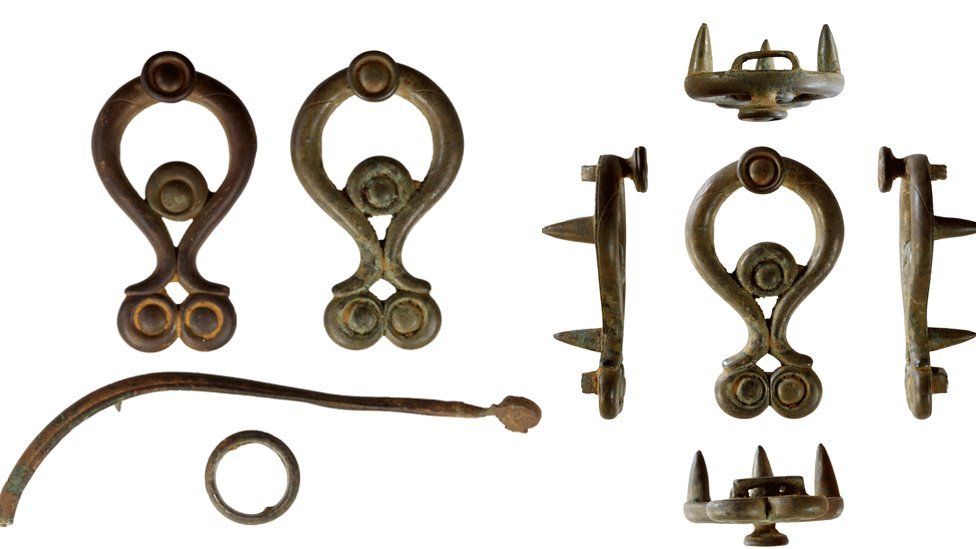Norfolk rare Boudica-era 'chariot' harness find puzzles experts
BBC News13 February 2021

Two strap-mounts, one ring and a binding strop (pictured left) were found together. Experts are unsure why the mounts (pictured right, at different angles) have spikes
Rare parts of a 2,000-year-old harness are like pieces of a puzzle to be solved, experts have said.
Two copper-alloy strap-mounts, one ring and a binding strop were discovered in Norfolk in January last year.
Dr Helen Geake of the portable antiquities scheme said they may have been connected to a chariot in the age of Boudica (30AD-60/61AD).
"This is really rare, it's really unusual to the point we are not sure what we are looking at," she added.
"The experts think this is from a horse harness and possibly connected to a chariot that someone like Boudica would have travelled around in - and that is why it is so exciting."
'Finding pieces of a jigsaw'
The Icenian objects, discovered by detectorists in the Broadland area, are unlike other chariot fittings and are not a complete set, she added."We know these were used by the top people in Iron Age Norfolk, and had really smart-looking mounts on them like these, but the particular form of these ones is rather odd."
The spikes on the reverse of the mounts "don't seem to make any obvious sense", but had been found on others elsewhere in England, Dr Geake added.
"What's new is finding these two, clearly a pair, with other objects that are also apparently from the same harness, as they are in the same style," she said.
"This is like finding four pieces of a jigsaw already put together - we are piecing the evidence together.
"They have a sinuous beauty - they are pieces of art in their own right."
It is hoped that the Castle Museum in Norwich will claim the objects, which have been declared treasure by the coroner, to add to its "unparalleled collection of iron age objects", Dr Geake added.
"Hopefully once they are in the museum, the many Iron Age specialists we have in Norfolk can get to grips with what on earth they really are," she said.

Norfolk rare Boudica-era 'chariot' harness find puzzles experts
A find from the age of Boudica is so unusual that historians are "not sure what we are looking at".